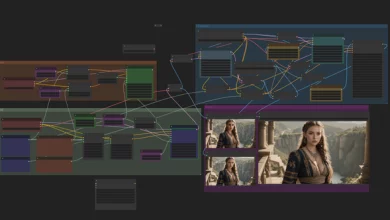
Testers have always used useful but time-consuming manual and code-based automation, but now the requirements have changed. And for the best average quality assurance, such a strategy does not fit into the rapid and ever-evolving IT industry.
A key strength here is to convert QA testing through a combination of manual and codeless test automation technologies. Let’s find out how.
Manual and Automated Codeless Testing
When testing and automation are concerned, there’s always been a gap. Manual Testers perform ongoing tests through all the data of a particular feature, understanding the complexities of an application, creating and executing test cases.
Then there are automation testers associated with figuring out the requirements for automation and automating the added test cases.
Both “Manual Testing” and “Automation Testing” are techniques that take time and keep the testers fully engaged. However, manual testing is tiring because developers are always adding new features and improvements that need to be tested for bug fixes for verification.
Misconceptions for Codeless Test Automation
The misconceptions about codeless tests stem from the fact that codeless checking was very non-existent until some time ago, or even though it was there back in the day, it was in the way of recording and playback equipment.
Thus, the assumption was that codeless testing only supported testers to start automated testing, but it needed coding skills to take it to a comprehensive and maintainable level. However, there is still a list of myths to address.
- It is Merely Recording and Playback
It is just a myth, as discussed above. There are actually methods for codeless test automation that are not merely recording and playback.
- Difficult to Initiate
This again originated from the record and preview testing approaches, but now it does not necessarily apply. Simple editing and management of test cases are now assisted by codeless testing tools.
- Not Entirely Codeless
The codeless testing tools normally convert and then implement the codeless measures written in the frontend to codes in the backend.
Although HTML, CSS and Xpath knowledge may be needed to successfully execute these test cases each time, the experience of coding is not a necessity. Advanced technologies such as AI and ML now allow tools to provide real codeless test automation solutions.
Why Do We Regard Codeless Test Automation as Efficient?
It requires time, effort, and commitment to learning the language of programming to master code writing. That’s why, being a bit of both a programmer and a QA engineer, automation testers will feel like walking on no-man’s-land.
Though modern testers develop a comprehensive knowledge of different innovations, coding often takes the focus away of a QA specialist from their primary job. The “codeless future” has therefore become a context for reevaluating the previous position of QA engineers.
To clarify, one must not take too practically the idea of “codeless testing.” The word itself points to the test case automation method with no or a minimum quantity of code.
Scriptless testing tools, however, build a layer of abstraction on the top of the source code. It implies that to test a scenario, the test scripts still depend on certain programme bits. However, to build or change these test files, there is no need to do intense coding.
The Shift From Code-Based to Code-less
For web-based research and testing, the “record-and-play” method has become the most common. The QA engineer directly conducts a test and uses the instrument to report it inch by inch. Then the tool automates the checks to generate the codes.
QA engineers run the same experiments on other goods to make the entire process time-consuming. Testers can, however, update the documented scripts and adjust the product specifications to the QA strategy.
It doesn’t take specialized training to use most of the automation tools, and they typically come with a deep end-user tutorial. And this turns the world of code-based evaluation into a codeless one.
However, in the production of GUI tests, the method of codeless testing has become incredibly successful. Within that scenario, user-like activity is captured and automated by QA engineers. As fast as programmers complete the UI, we can automate test cases.
The code is the secret if we intend automation for visual processing, and testers wouldn’t need to go through complicated interfaces. Other than this, if GUI tests were done through codeless testing tools, there is no need for developers to conduct UI tests.
With several desktop and mobile applications, modern automation systems are versatile. This implies that automated tests evaluate how the service fits over several devices.
Advantages of Codeless Automation Tests
There are some obvious and not so apparent explanations why you should consider introducing codeless testing in the QA phase, although the process is not entirely code-free, It’s easy.
- It Encourages Team’s Efficiency
Codeless automation tools increase the coverage of tests and, thus, boost the standard of QA software. QA engineers build and control even complicated program code using such tools; they are simple to manage and alter.
- It is Time Saving
The testers easily automate a test scenario as it requires no coding exposure. This makes it easier to concentrate on quality management and software debugging rather than first handling the heavy code.
- It is Cost-Efficient
To add to the process with codeless automation devices, you don’t need to employ additional experts. However, Worth noting that open-source resources, which are free to use, require heavy investment in technical professional support, test execution, and upkeep.
- It has a Friendly Interface
An intuitive Interface automates the entire testing process and supports it, so it is a direct experience for QA specialists to interact with codeless automation instruments.
Conclusion
The pressure of highly competitive and fast-growing innovative approaches is faced by companies engaged in software development.
The struggle for consumers’ interest and loyalty makes the rivals shorten release cycles, introduce additional features quickly, and capture consumer trends to update the quality product.
A way to boost the entire development process could be to follow the QA expertise and incorporate codeless tools to automate repetitive tasks.




